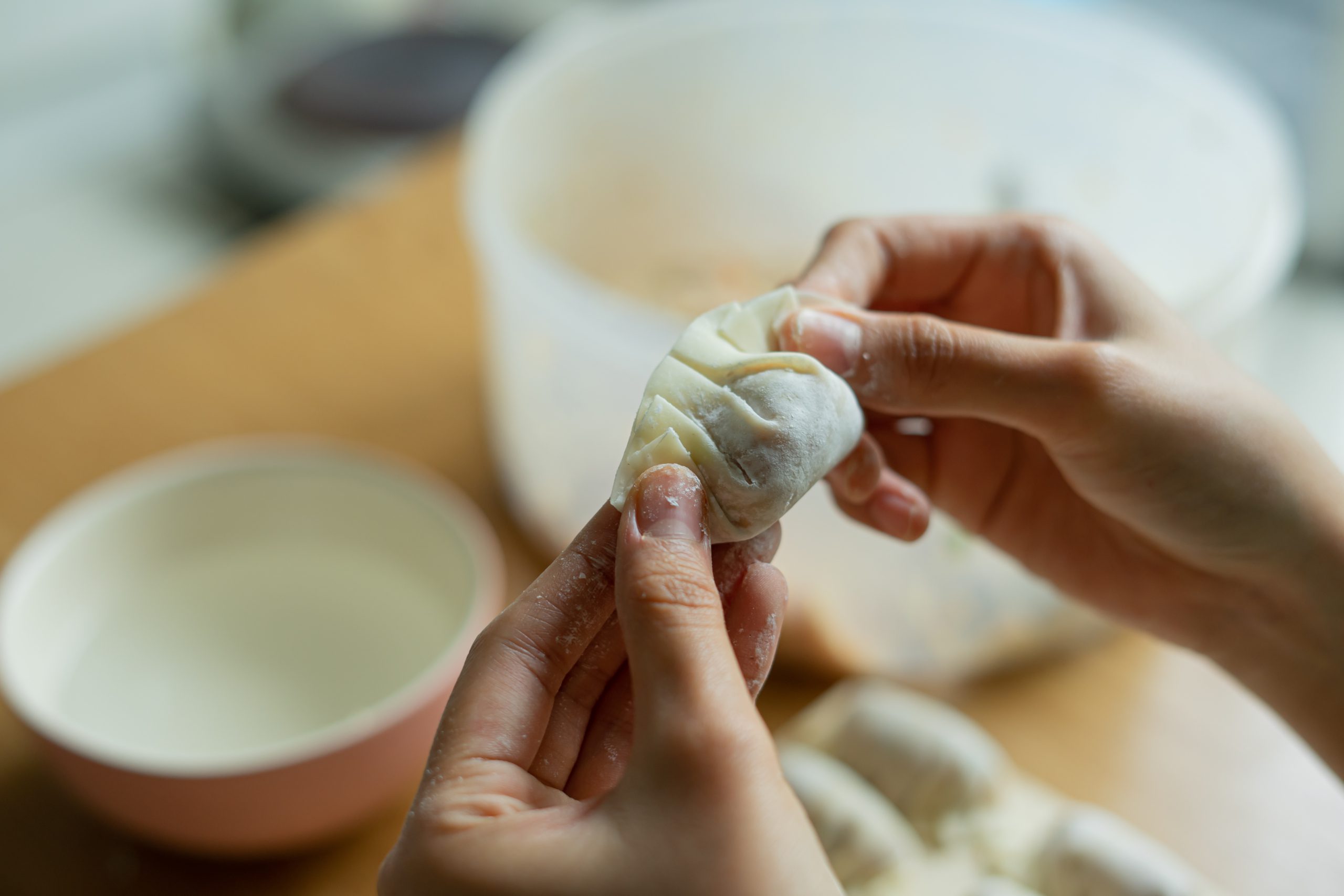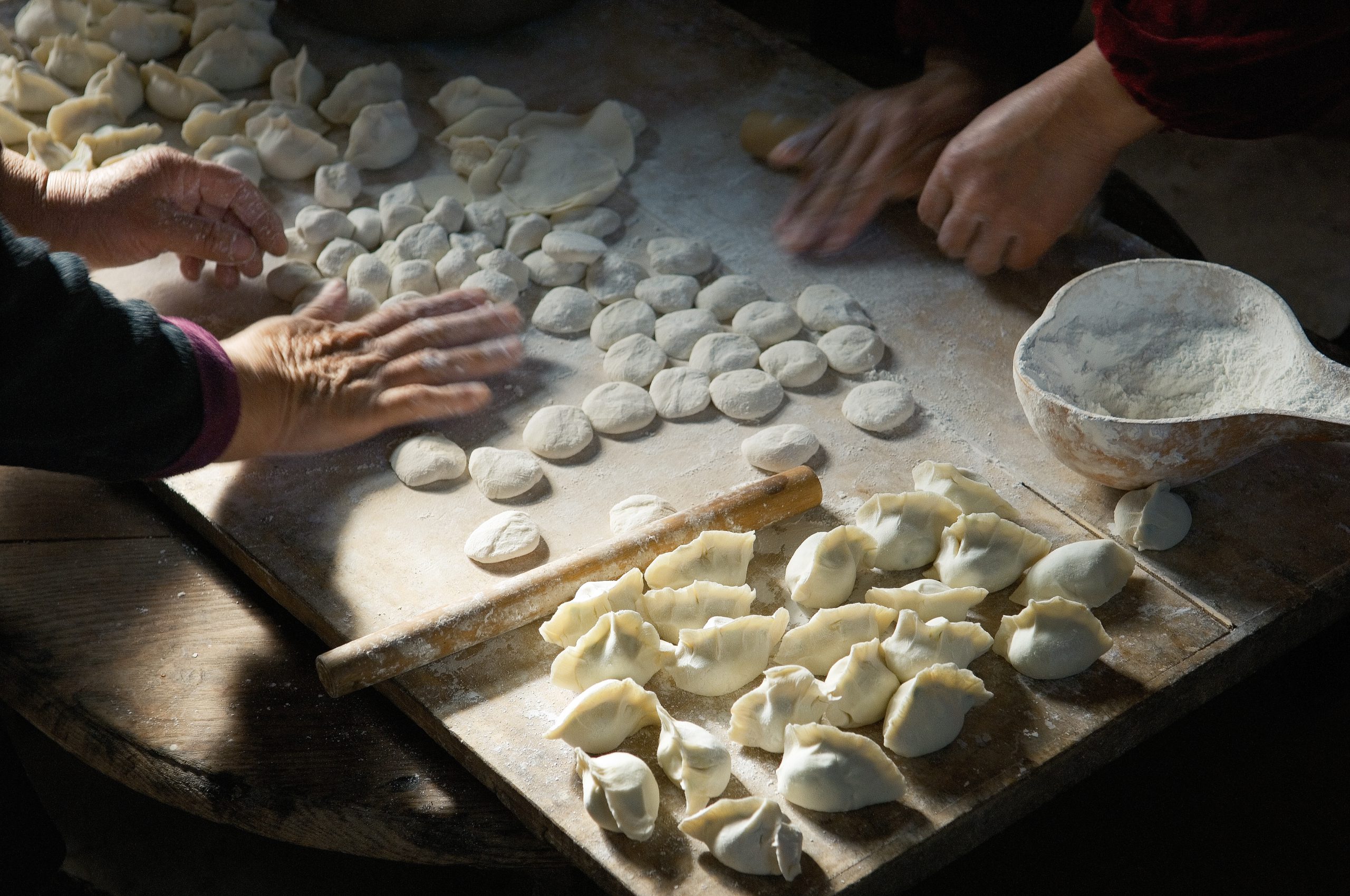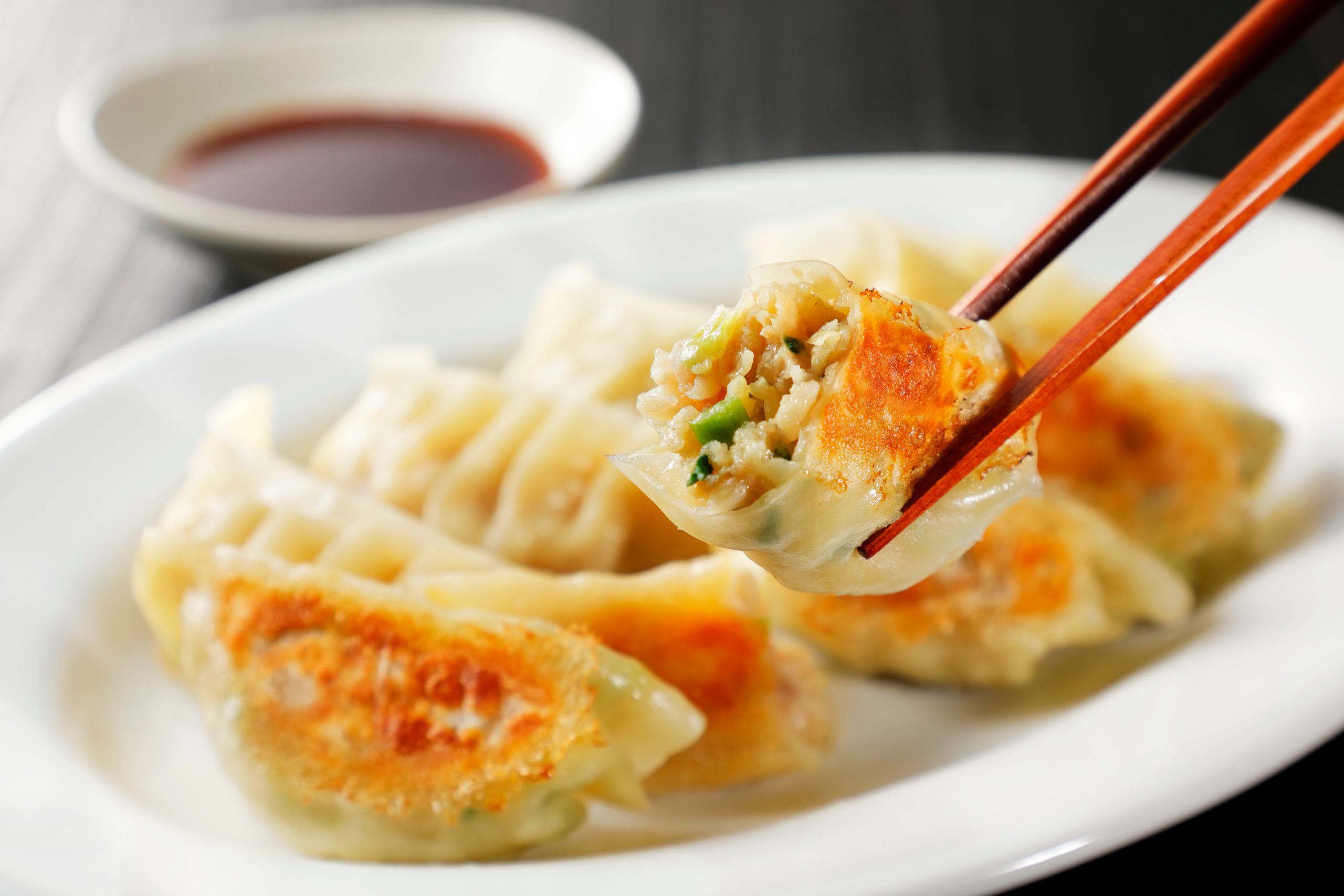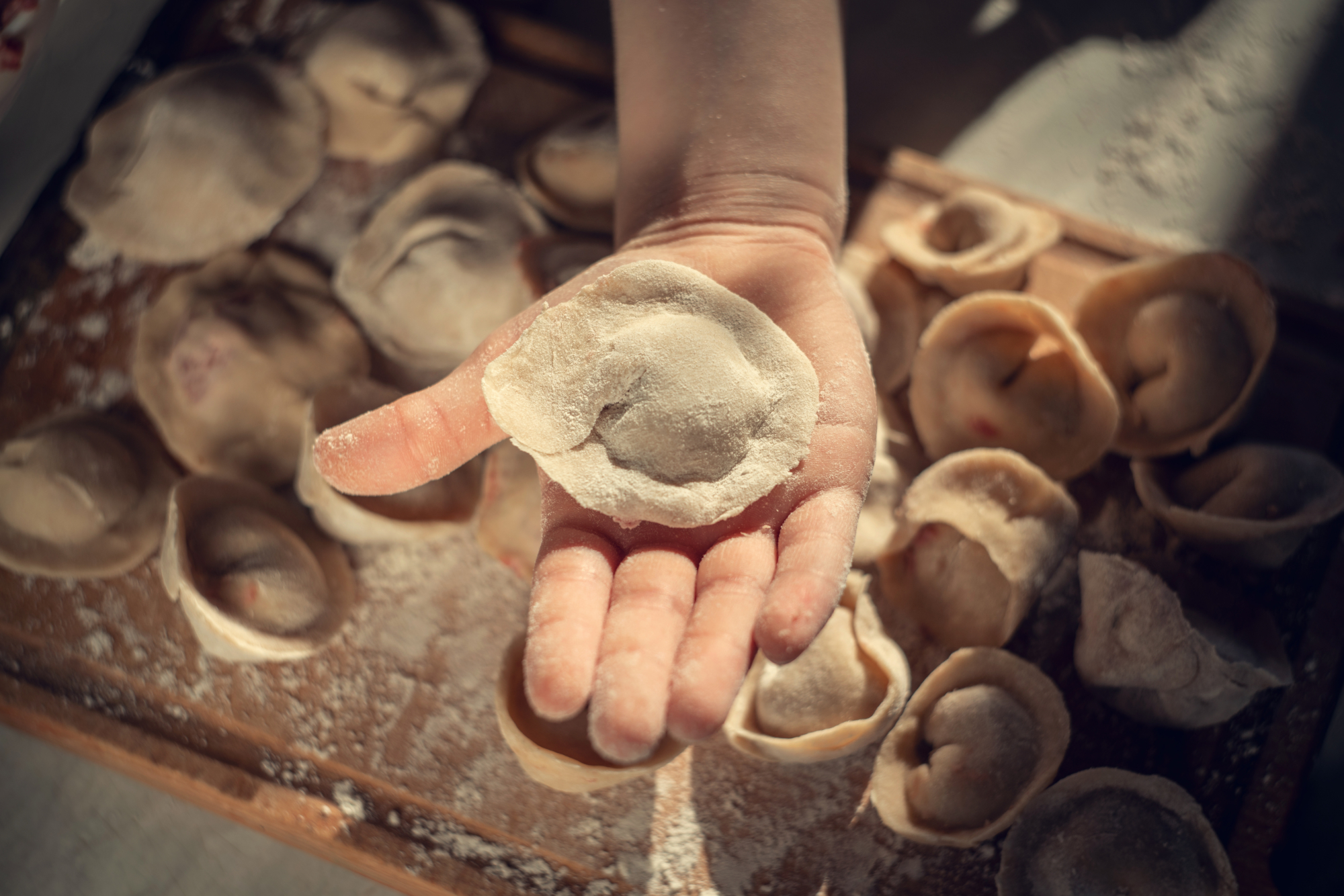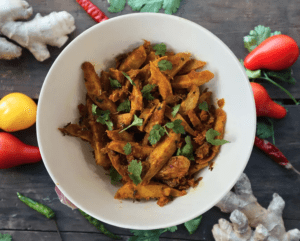Dumplings 101
Everything you need to know about this globally popular dish.
Dumplings from Around the World
From Afghanistan to Asia and Turkey to Timbuktu, when you’re looking for comfort food, just about every world culture can point you toward a dumpling. Whether it’s gently dipped into a spicy sauce or swimming in a steamy broth, the humble dumpling satisfies at the first saucy bite.
What is a Dumpling?
We know they’re delicious and we know we love to eat them, but what is it that makes a dumpling a dumpling? In the 17th century, the word dumpling was first attached to the doughy delights we recognize as dumplings. In English, it means “little lumps.” But that doesn’t even begin to cover everything we know to be a dumpling.
They can be little lumps of dough, but they can also be thin sheets of dough with savory fillings tucked inside. Or, they can be anything that gets “dumped” into a liquid. Some are stuffed with minced meats and vegetables, others rely on flavorful broths or rich sauces to become a meal. Some are steamed, some are boiled, and some are fried.
Where Do Dumplings Come From?
The story of the dumpling is an international one, spanning many centuries and continents. Some food historians trace it back to a Chinese physician by the name of Zhang Zhong. During the Han Dynasty from 206 BC – 220 AD, Zhong discovered that people in his village were suffering from the cold weather. He made little ear-shaped pockets from wheat and stuffed them with lamb and black peppers. They were boiled and placed in a hot broth of medicinal herbs.
In Chinese medicine, these herbs promoted blood flow, warming the body and thawing out the cold ears of those suffering from frostbite. Traditionally, Chinese families commemorate this dumpling origin story on the Chinese New Year, making dumplings together and eating them at midnight. It’s a beautiful story, but we don’t know for certain if it’s true.
We do know that dumplings first appear in the written record 1,700 years ago thanks to a prominent Chinese scholar by the name of Shu Xi. He mentions wheat-based dough balls that were kneaded, then stuffed with pork, mutton, and a variation of spices. They were cooked with steam and then dipped into a meat-based sauce. The first actual recipe for dumplings is in a 5th-century Roman cookbook called Apicius. It describes a dumpling of finely chopped roasted pheasant mixed with fat, salt, and pepper.
Dumplings: The Original Takeaway Food
Many scholars believe the dumpling actually originated in Anatolia, where Asia and Europe meet in modern-day Turkey. When archeologists were excavating in this region, they found what appeared to be dumplings buried underground. For many centuries, that was the center of the world. As the Ottoman Empire grew, dumplings traveled with armies to sustain them on their journeys of conquest. Their enclosed shape helped extend the life of meat, and the dough was a good way to make use of surplus grains. In the busy, multicultural hub of Anatolia, the dumpling was the original takeaway food.
Traveling the Silk Road
The Turks hired Mongols, an East Asian ethnic group native to Mongolia, China, and parts of the Russian Federation, to help expand their empire. They traveled the ancient Silk Roads trading goods and introducing new spices and foods. It is speculated that this is how dumplings were brought to Russia, Poland, Ukraine, and Mongol-controlled Korea.
Scholars think that dumplings made their way to Italy during the 9th century when Sicily was under Arab control. This launched a dumpling renaissance as Italy slowly united, giving the world gnocchi, ravioli, and tortellini, just to name a few.
Due to their presence in the center of the action during the Ottoman era, the best guess is that they started in the Middle East and Central Asia. Nutrition scholar Eugene Anderson suggests that some dumpling traditions moved down towards the Mediterranean and others headed further east, resulting in parallel food cultures.
Dumplings Around the World
Dumplings traveled as political boundaries shifted. They were influenced by existing culinary traditions and shaped by new ideas everywhere they went. Since wheat wasn’t available everywhere, other types of flour were used for the dough such as tapioca, rice, and sweet potato. New shapes and fillings were introduced and different types of sauces were paired with them.
Asia and The Middle East Dumplings
- Manti: Perhaps the most ancient form of dumpling coming from Turkey. These are traditionally made with minced lamb or beef. They are topped with spicy butter and garlic yogurt sauce. These are popular to make for special occasions, and usually, a team of 3 women will work together to roll the dough, cut the squares, and stuff the filling.
- Mantu: A very popular main or side dish in Afghanistan, mantu are stuffed with beef or lamb. Sauces and toppings include ground meat, mixed vegetables, chickpeas, and onions. They are served with a special sauce called chaka, a blend of yogurt, minced garlic, lemon, and salt.
- Mandu: These Korean dumplings are stuffed with ground pork or beef, translucent vegetables like cabbage and scallions, and fragrant Asian staples like ginger, soy sauce, and shiitake mushrooms. Mandu are traditionally steamed and dipped into soy, vinegar, and chile sauce.
- Mantou: These Chinese dumplings are often simply referred to as Steamed Buns. The unstuffed version is mantou, and the stuffed versions are called Bao Buns. After the flour and yeast are fermented, the dough is rolled into a log shape and cut like biscuits. Then they are steamed to fluffy perfection.
- Momos: Sometimes called the “Pride of Tibet”, momos are appreciated for adding a burst of flavor to mildly flavored Tibetan cuisine. Crescent-shaped dumplings are stuffed with a spoonful of minced beef, garlic, mushrooms, carrot, ginger, soy sauce, and sesame oil.
- Jiaozi: The unique shape of these dumplings from China is meant to resemble the sycee, an ancient currency. Traditionally made on the Chinese New Year, they are stuffed with any combination of ground pork or beef, egg, tofu, mushrooms, ginger, and dipped in a soy and chile sauce.
- Gyoza: Japan It is believed that the Chinese brought jiaozi dumplings to Japan during the occupation of WWII. The Japanese fried them, becoming what we know today as gyoza. In a nod to their dumpling cousins, throughout Italy, they are known as ravioli giapponesi.
Eastern European Dumplings
- Pelmeni: These Russian dumplings are believed to have come from Ural or Siberia, the name meaning bread ears. They are filled with ground pork, chicken, turkey, or beef and then seasoned simply with onions, salt, and pepper. Considered the national dish of Russia, pelmeni is served with a dollop of cool sour cream on top.
- Pierogi: In Poland, pierogi can be savory or sweet. The savory version was traditionally chopped kidneys, veal fat, greens, and nutmeg. Today, mashed potatoes or minced meat with onions and cheese are more common. Sweet versions usually contain stone fruits and are topped with powdered sugar and butter.
- Varenyky: These dumplings from Ukraine are filled with potato, farm cheese called tvarog, sauerkraut, cabbage, beans, peas, meat, and sometimes fish. Historically, varenyky brought good luck and were often used in pagan rituals.
The Mediterranean Dumplings
- Manti: In Greece, the dumpling of choice is called manti. It was brought over by the Turks when Greece was under Ottoman rule. The cooking style is so different than traditional Greek that it has its own name: Politiki, named after those who arrived from “Poli”, the nickname for Constantinople. Manti is filled with veal or lamb, bulgur, onions, tomato paste, and a unique spice blend of cinnamon and allspice. They are topped with a sauce of Greek yogurt, lots of garlic, hot pepper flakes, and sumac.
- Gnocchi/ Ravioli/Tortellini: Italy boasts several variations of dumplings, but the most well-known are gnocchi, an unfilled potato dumpling, and ravioli, a stuffed pasta. Tortellini are similar to ravioli but shaped more like a little purse. Gnocchi is made with potatoes and sometimes ricotta cheese. Ravioli and tortellini can be stuffed with ricotta and herbs or minced meat. They are all usually served in a seasonal sauce such as tomato or pesto in the summer, and a walnut, pumpkin, or ragu sauce in the winter.
African Dumplings
- Fufu: In West and Central Africa and the Caribbean islands, fufu is a ball-shaped dumpling that’s dipped into a rich sauce. It’s made of boiled and mashed cassava, yam, or plantain. Fufu, meaning “mashed”, is most common in Ghana, the Democratic Republic of Congo, and Nigeria. Since the starchy vegetables have been pre-cooked, you simply roll the dough into balls and serve. It’s eaten by pulling pieces apart and dipping them into thick soups and flavorful stews.
The Diversity of Dumplings
You can eat them boiled, steamed, or fried, with chopsticks, a fork, or your hands. You can stuff them with meats, cheeses, vegetables, herbs, and spices. You can serve them with dips or covered in sauce. The ancient origins of the dumpling are a testament to how much we love them across different cultures all over the world.
The most beautiful thing about the dumpling is that it’s so universal. We all have a cultural affinity for at least one type of delicious, doughy ball or crescent that represents where we come from. While the shapes, fillings, flavors, and sauces may differ around the world, the dumpling is a food that binds us all together.
Find Local Thai Shefs & Meals
If your mouth is watering just as much as ours, order some authentic homecooked dumplings from our local community of chefs — every cook is food safety certified and earns a meaningful income selling their homemade dishes.
- Los Angeles
- San Francisco (Bay Area)
- Chicago
- New York City
- New Jersey
- Seattle
Find your local home-cooked food today!


